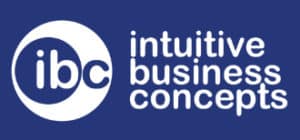
If your organization is like most, you’ve been in a mad rush to convert your traditional instructor-led classes to a live online format.
Designing effective live online courses can be a complex process, particularly when specific goals and performance objectives must be met.
In this article, we’ve compiled some important pointers to ensure that your virtual programs are designed to achieve optimum results.
Keep It interactive.
Presenters tend to fall into lecture mode when they can’t see the participants. That means your formerly interactive, face-to-face classroom learning can easily turn into dull presentation-style sessions when they go virtual. But just because participants are remote doesn’t mean that your class must be a one-way lecture. The principles of adult learning and engagement still apply, even in the virtual environment. Your online training design should be just as interactive and interesting as if it were in-person, so put the engagement features of your online training platform to work.
Economize your time as appropriate.
One minute of traditional classroom time isn’t necessarily the equivalent of one minute of virtual time. In an in-person class, for example, you might ask participants to go around the room and introduce themselves. In the virtual classroom, attendees can type their introductions in the chat window. Those in-person introductions could take 15 minutes, while the online chat introductions might only take two minutes. Not every activity can be abbreviated, but you can use technology to your advantage to deliver quality learning and the same level of effectiveness in less time.
Design with participants in mind.
Give careful thought to who will be attending your sessions and the obstacles they may be facing. In a corporate training environment, for example, is there limited time to attend courses during the day? If so, it should influence the length of your online classes. It may be better to hold three 90-minute sessions throughout the week. Or you might determine that it would be better for your participants to divvy the material up into weekly 45-minute sessions.
Choose appropriate activities.
The process of selecting learning exercises is similar to designing a traditional training class, but with different tools, such as chat, polling, and file transfers. Certain activities in a traditional classroom readily translate into the live online environment. For example, a team-based Q&A competition in the classroom could become an online competition using poll questions. Screen-sharing capabilities enable live demonstrations to become virtual ones. As you think about the exercises for your online programs, ensure that they are relevant to the learning outcomes you’re seeking.
Mix it up.
Do your best to keep participants interacting and engaged every few minutes to help them stay focused on the material instead of the multitude of distractions in their environment. Everyone loves variety and choice. That’s why it is smart to employ an array of teaching methodologies in your courses. Switch between audio, text, and video to keep things interesting.
Include self-paced pre- and post-learning opportunities.
How many in-person classes have you attended where the first portion was dedicated to non-critical content such as housekeeping, introductions to fellow attendees, or course overviews? Even in a live setting, these activities could easily be conducted by distributing pre-learning materials. For example, you could provide participants with a course overview, an instructor bio, and a video introduction in advance. Providing downloadable assets like these prior to the online session helps to ensure that attendees are prepped and ready to go when the class begins. The same holds true for post-learning. A strong reinforcement program is critical to every successful training practice. Consider adding self-paced content and assessments that can roll out systematically for a number of weeks following the class. By introducing pre- and post-learning elements like these, you can abbreviate the length of the remote session while enhancing the learning experience for participants.
It’s time to get creative.
Remote learning requires you to be more resourceful in your efforts to keep attendees focused and inspired. The success of your transition to online instruction depends upon a design that engages participants, helps them master new skills, and creates a positive learning experience.
For more than 20 years, associations, businesses, and educational institutions have turned to IBC for robust digital engagement solutions. To discuss options for your organization, please contact us today.
At IBC, we have a deep understanding of the critical business needs and processes specific to associations, non-profits, and unions. We ‘get’ your culture, your goals, and what drives you, too. Focused exclusively on and dedicated to delivering the most effective AMS, LMS, and Virtual Event Solutions for our clients, we’re well-versed in identifying and applying the integration techniques that will save you time and money. Since 2001, our cutting-edge products, unparalleled responsiveness, and award-winning services have helped organizations like yours increase their operational and financial performance by leveraging best practices and proven solutions. For more information about IBC, please visit the website at www.ibconcepts.com or call 443.603.0215.








